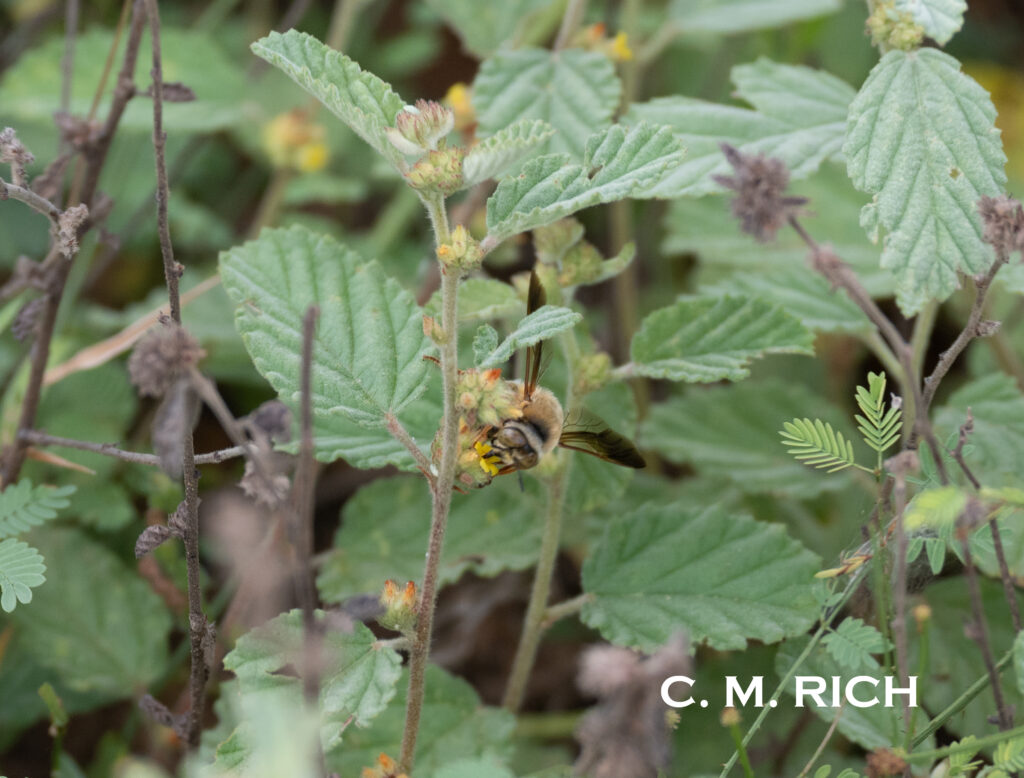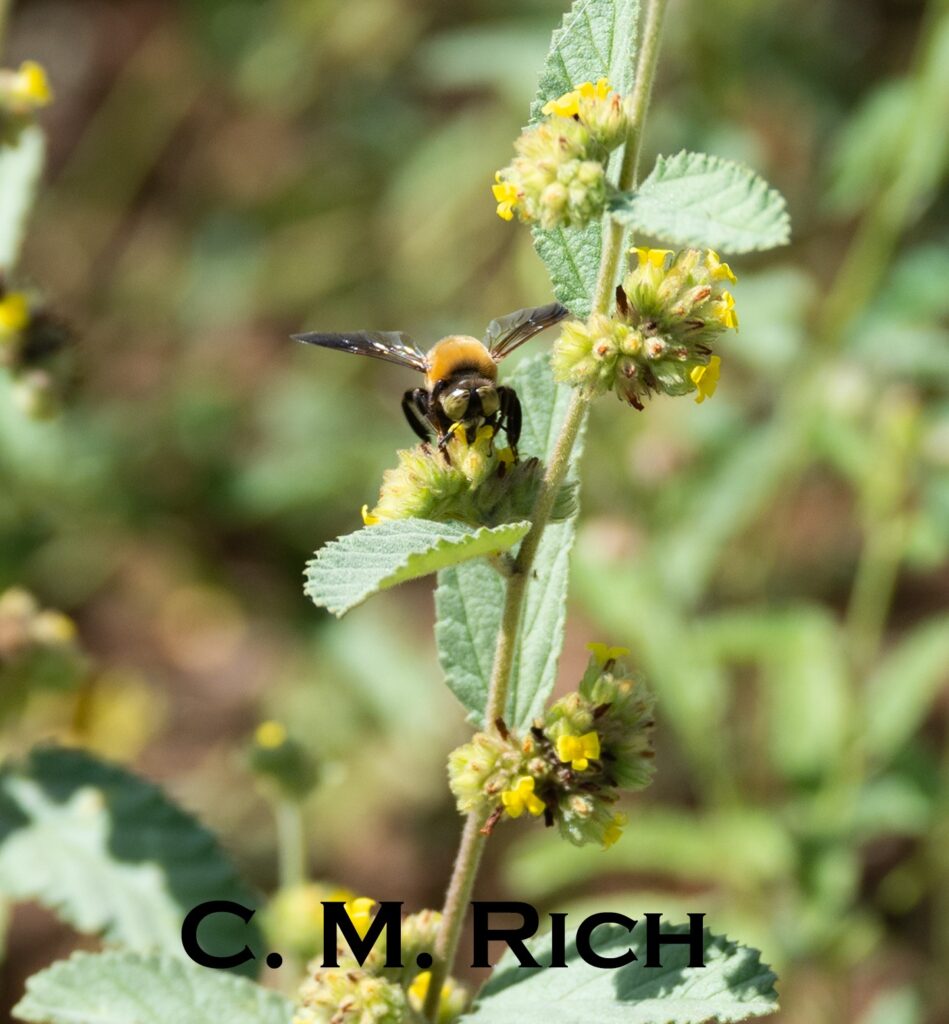Tepanec Long-horned Bee ~ Melissodes tepaneca
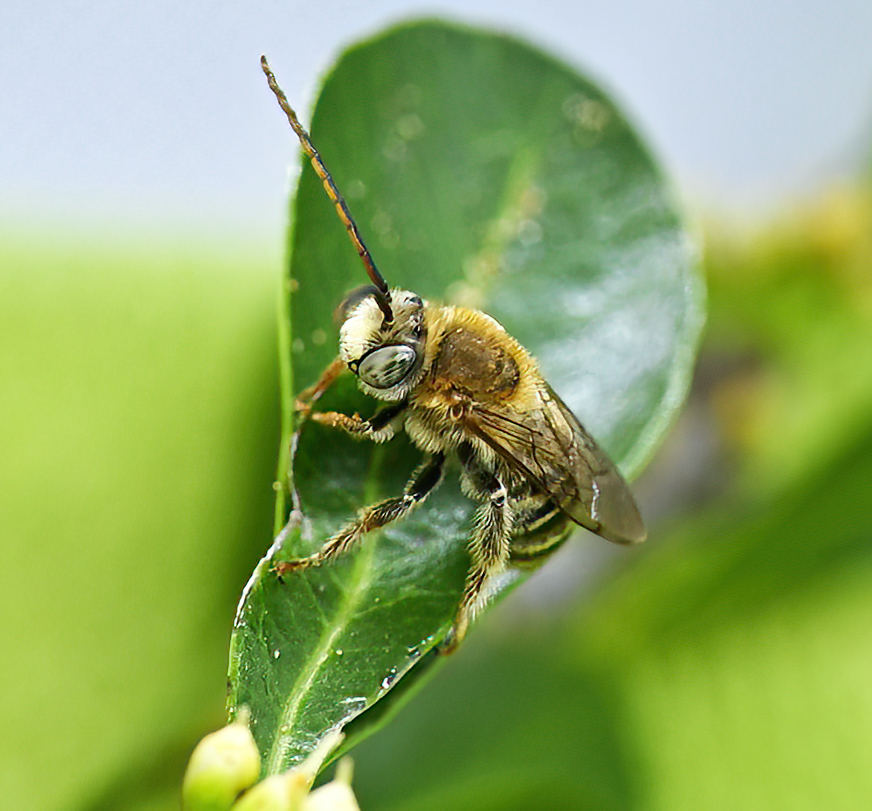
A Tepanec Long-horned bee enjoying a brief stop on a glossy, dark green Coma leaf.
About the Texas native bee:
“Abundant throughout the United States and Canada, these fast-flying bees are hairy and generally large. Males have extraordinarily long antenna.”
Source: Wilson, Joseph S., and Olivia Messinger Carril. “The Bees in Your Backyard: A Guide to North America’s Bees.” Princeton: Princeton University Press, 2016.
“Melissodes means ‘bee-like.’ Meslissa means ‘bee’ and -odes means ‘looks like’ or ‘resembles.'”
Source: Wilson, Joseph S., and Olivia Messinger Carril. “The Bees in Your Backyard: A Guide to North America’s Bees.” Princeton: Princeton University Press, 2016.

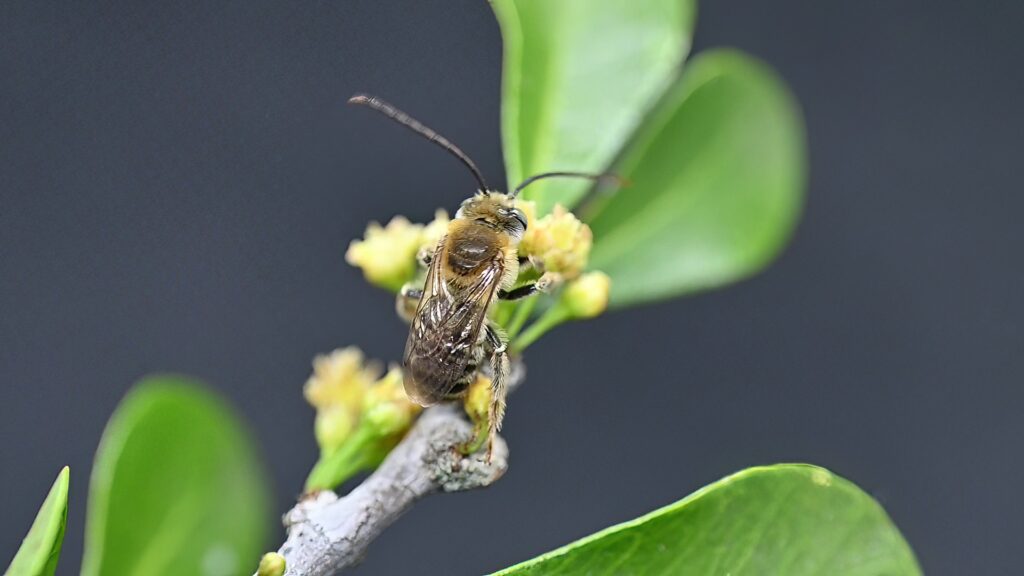

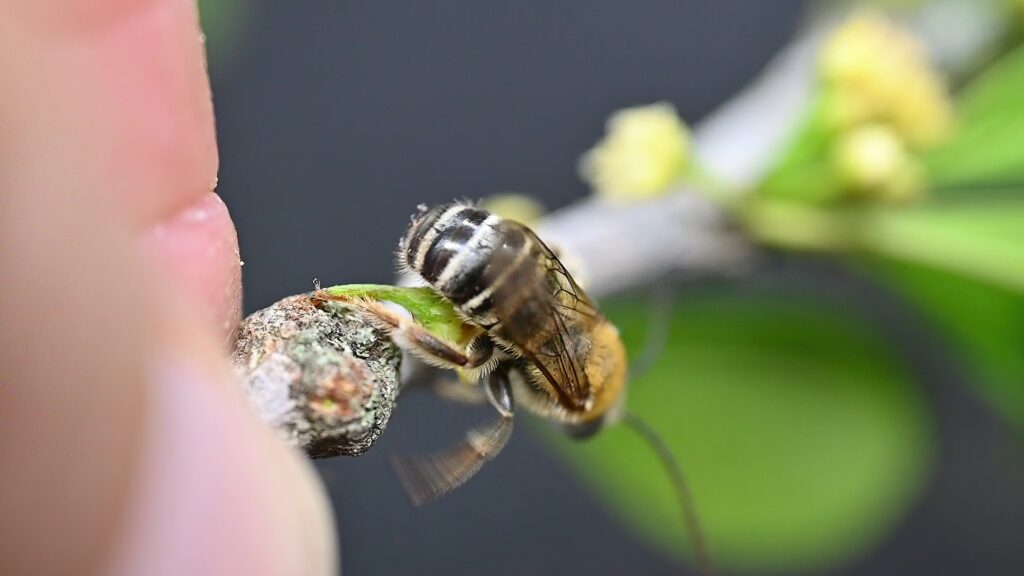
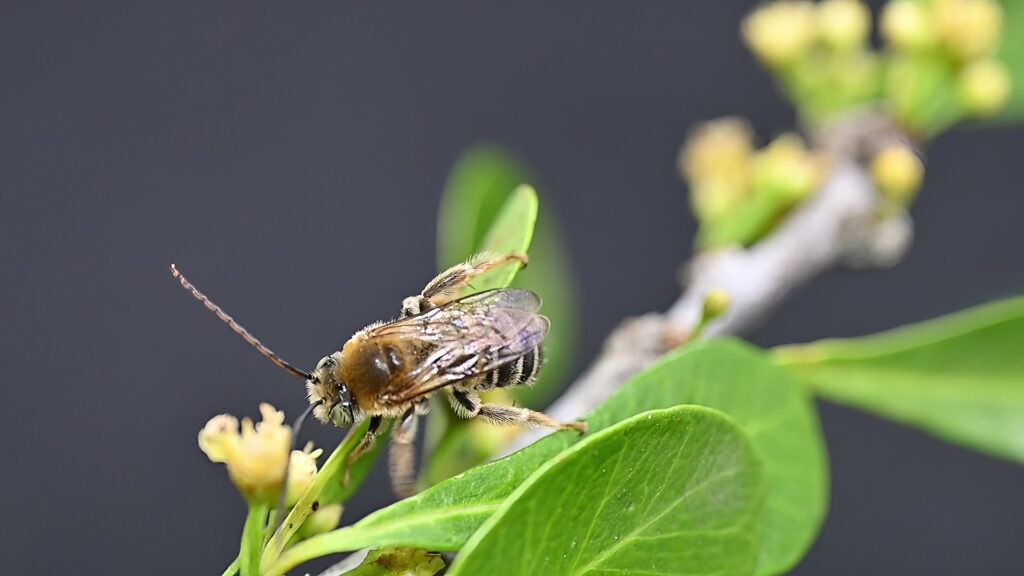
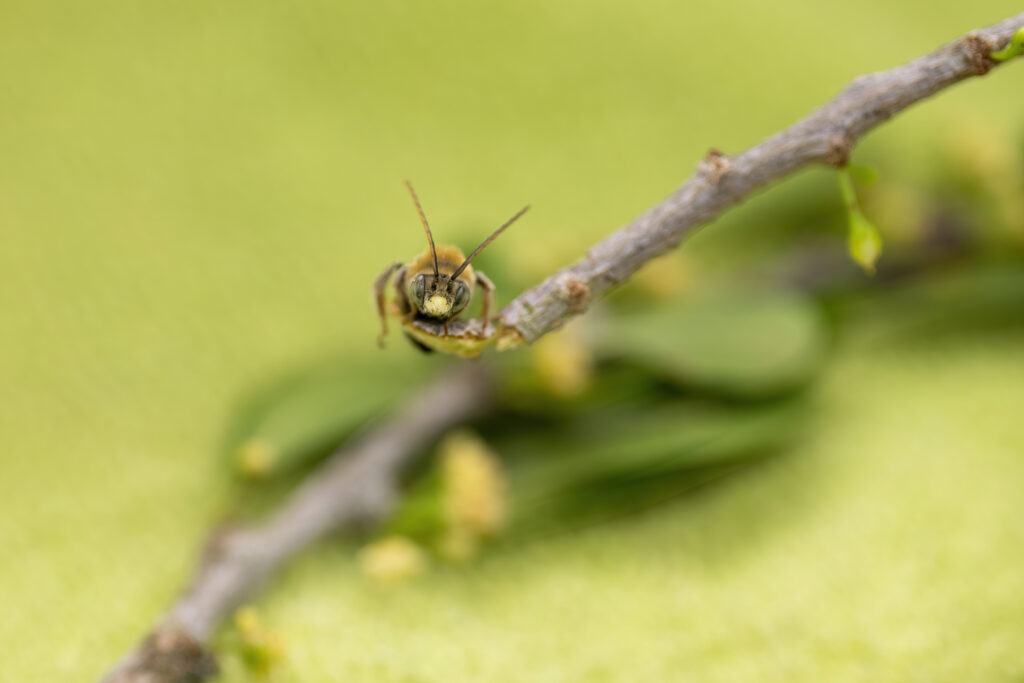
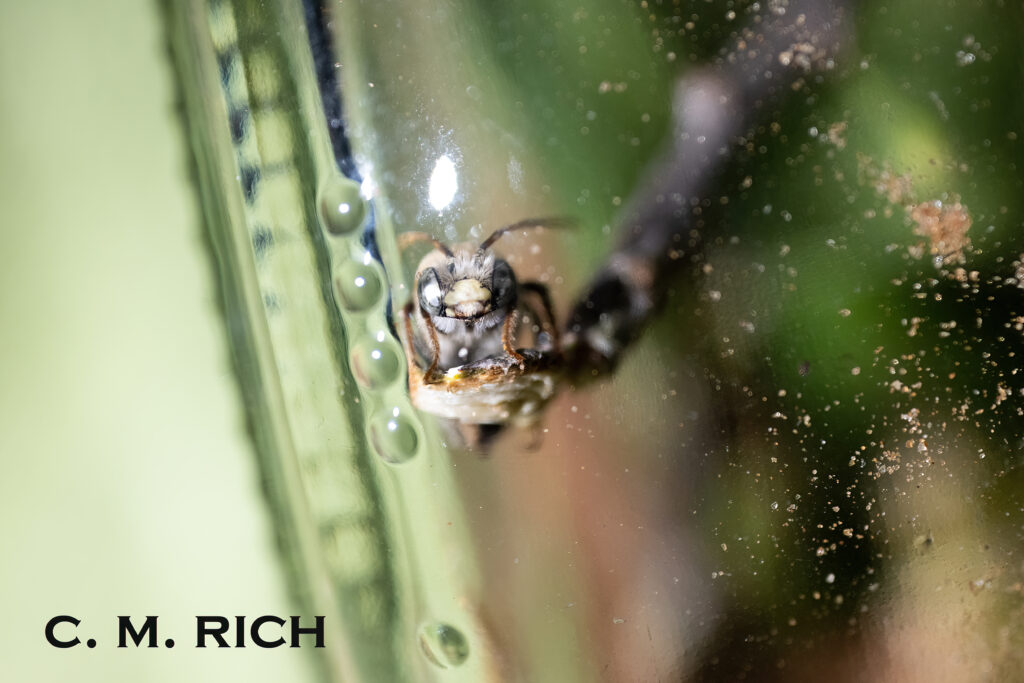
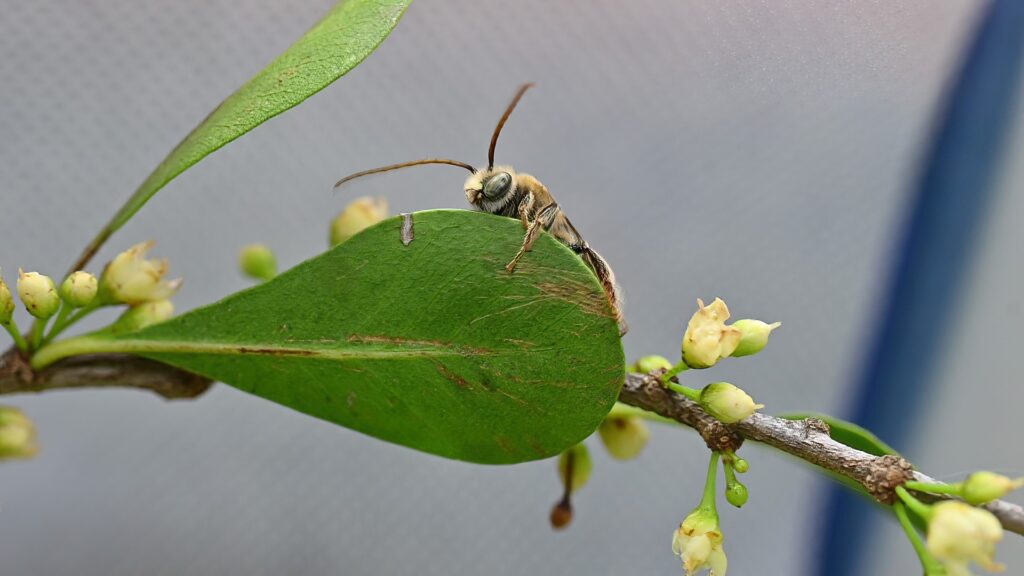
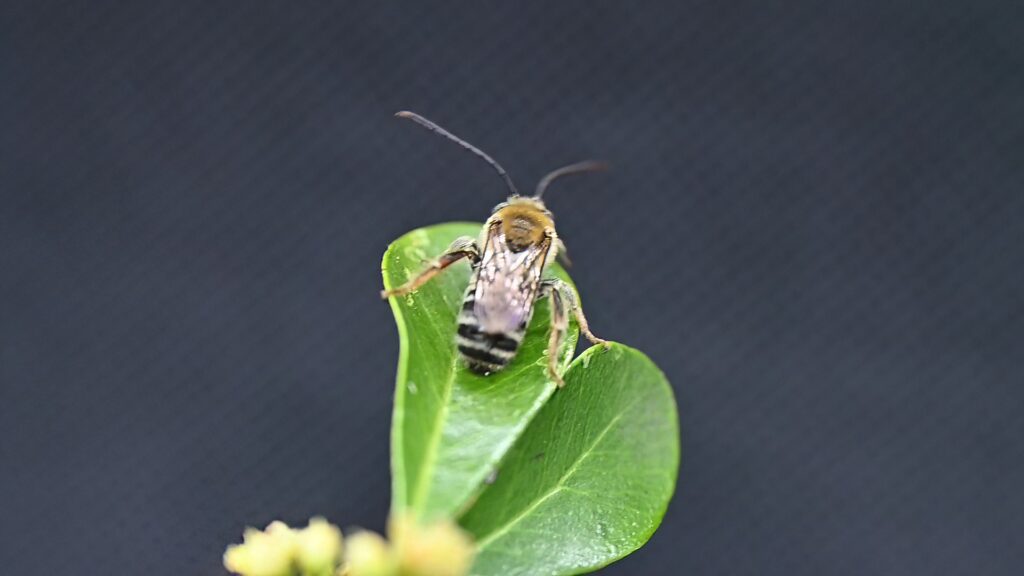
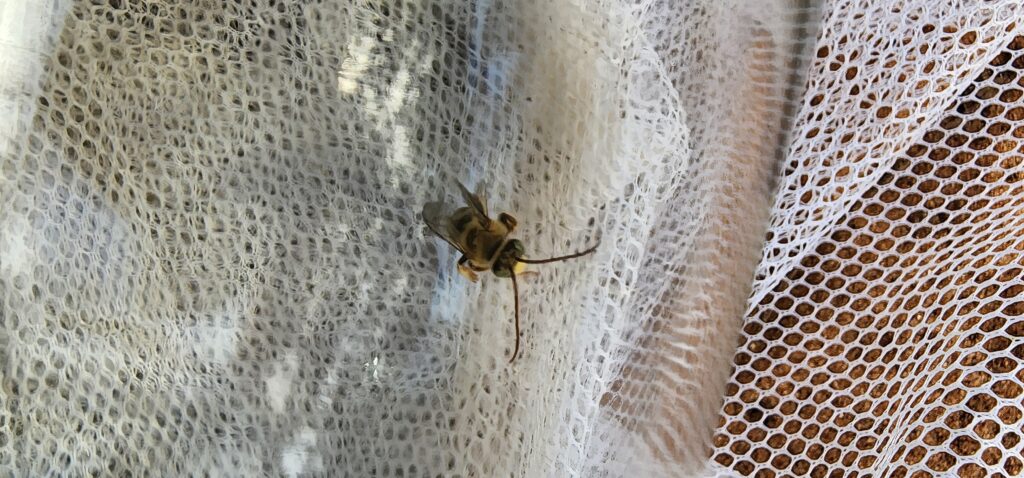
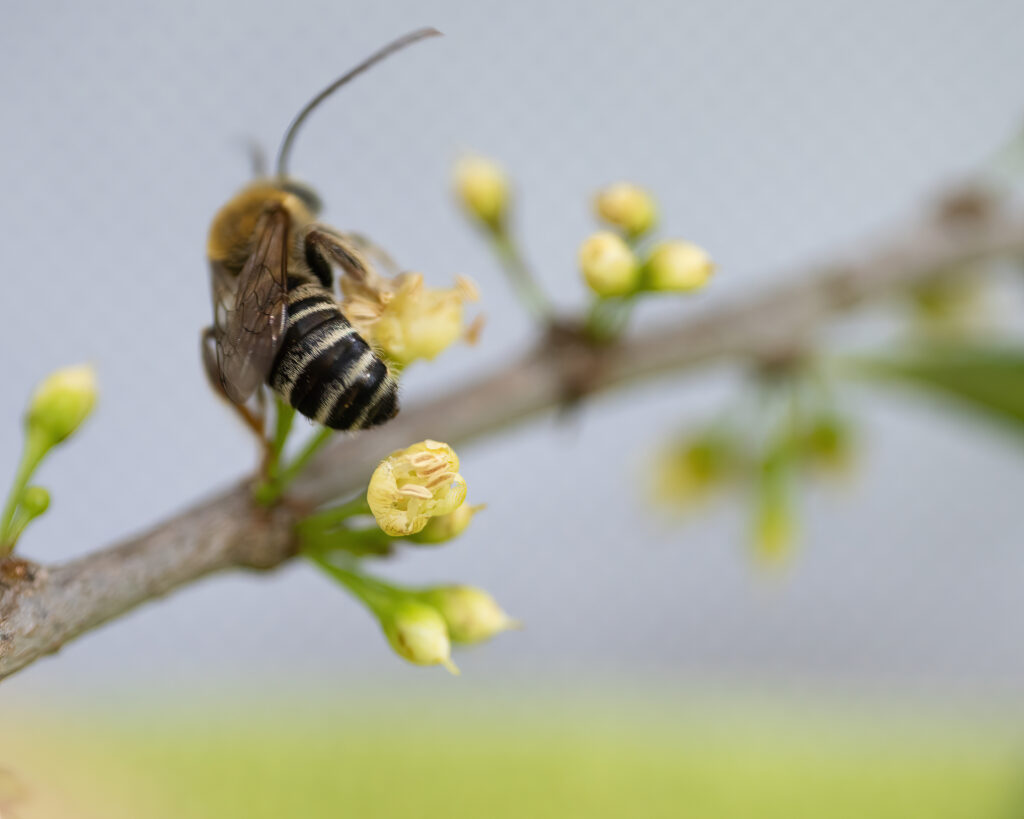
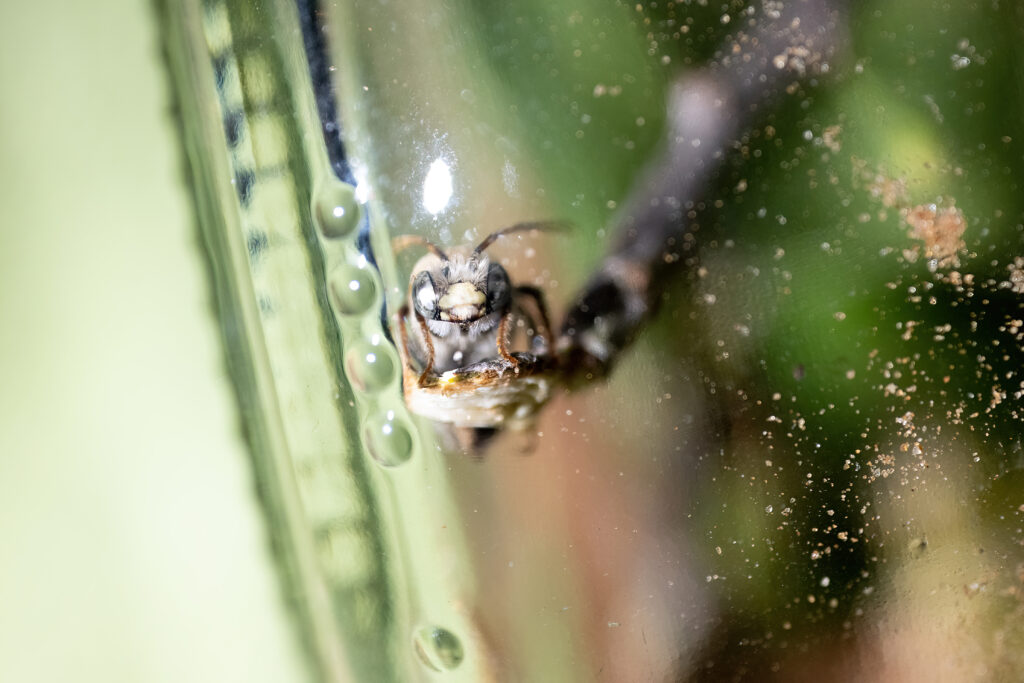
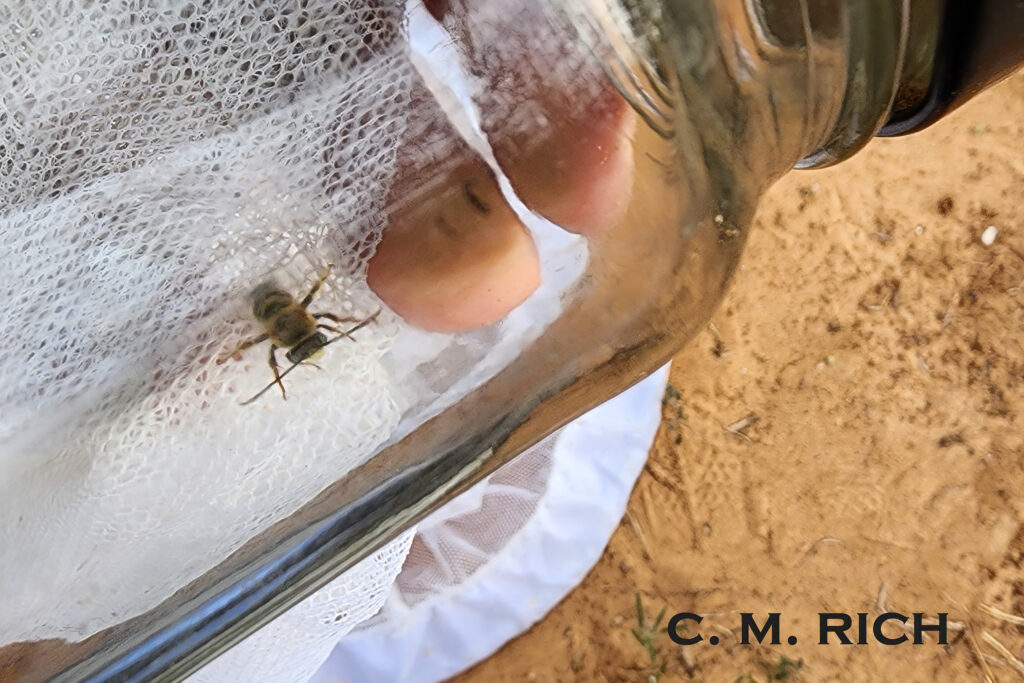
Note: Less than twenty-four hours after its initial capture, this Tepanec Long-horned bee was returned, alive and unharmed, to the exact tree he was found on. He buzzed off without skipping a beat!
About the Coma tree:
“Shrubs or trees up to 30′ tall (usually less), with milky sap, forming thickets from root sprouts. Side branches usually long slender thorns. Flowers: Radial, fragrant, in clusters from the leaf axils; petals 5, white, up to 3/16″ long. Leaves: Alternate; blades spatulate to ovate, tapering onto the petioles, up to 1 and 5/8″ long. The sweet fragrance of plants in bloom can be detected from long distances.”
Source: Richardson, Alfred, and Ken King. “Plants of Deep South Texas.“ College Station: Texas A & M University Press, 2011.
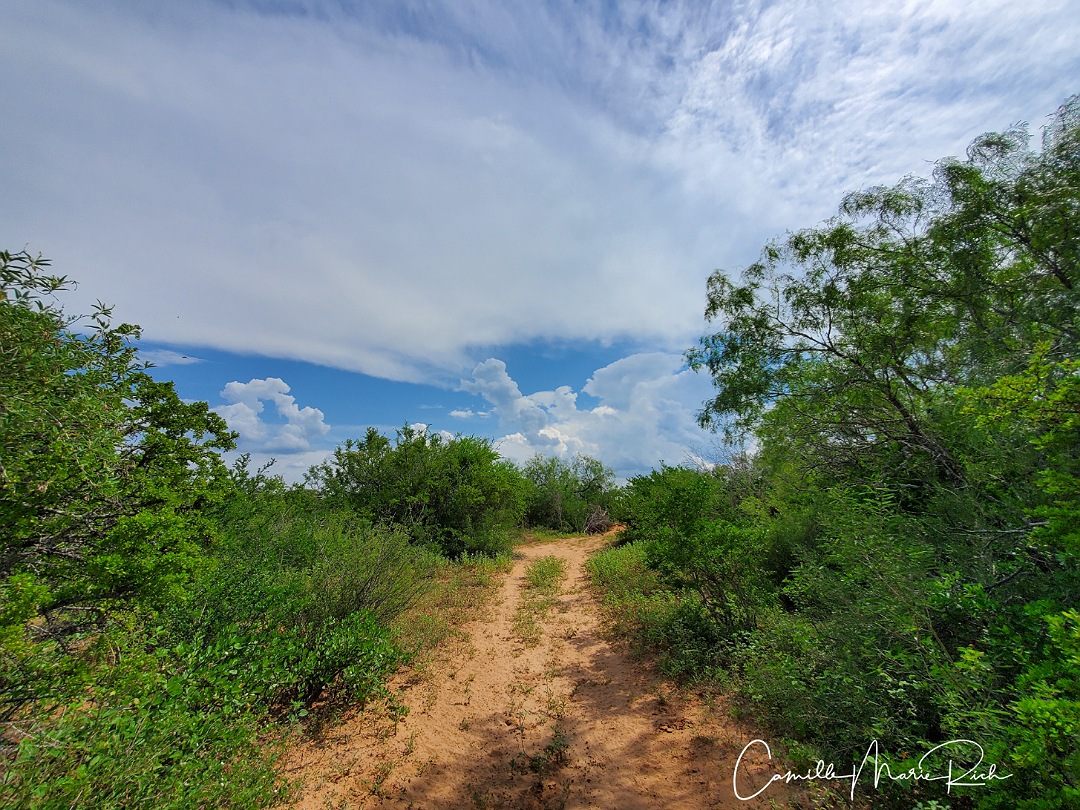
Coma is an attractive evergreen tree that is part of the Tamaulipan Thornscrub habitat that dots the landscape out on the South Texas Sand Sheet.
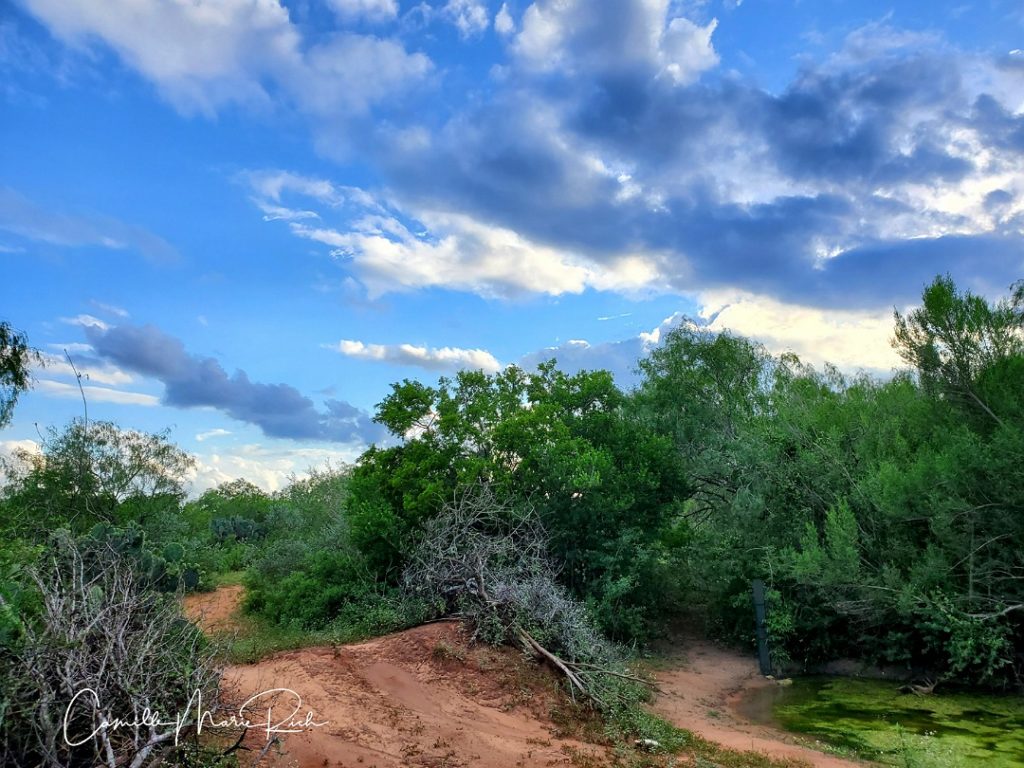
Books referenced:
- Bravo, Esteban. “Incredible Edibles of South Texas.” (What to Eat & How to Get It). Copy Zone. McAllen, Texas. 2013.
- Peacock, Dexter and Forrest S. Smith. “A Photographic Guide to the Vegetation of the South Texas Sand Sheet.” ” Texas A & M University Press. College Station. 2020.
- Eason, Michael. “Wildflowers of Texas.” Timber Press Field Guide. Timber Press, Inc. Portland, Oregon. 2018
- Richardson, Alfred, and Ken King. “Plants of Deep South Texas.” College Station: Texas A & M University Press, 2011.
- Wilson, Joseph S., and Olivia Messinger Carril. “The Bees in Your Backyard: A Guide to North America’s Bees.” Princeton: Princeton University Press, 2016.

Online resources:
- Wikipedia: Melissodes tepaneca
- Encyclopedia of Life: Tepanec Long-horned Bee
- Discover Life: Melissodes tepaneca
- Bug Guide: Species Melissodes tepaneca – Tepanec Long-horned Bee
- iNaturalist: Tepanec Long-horned Bee (Melissodes tepaneca)
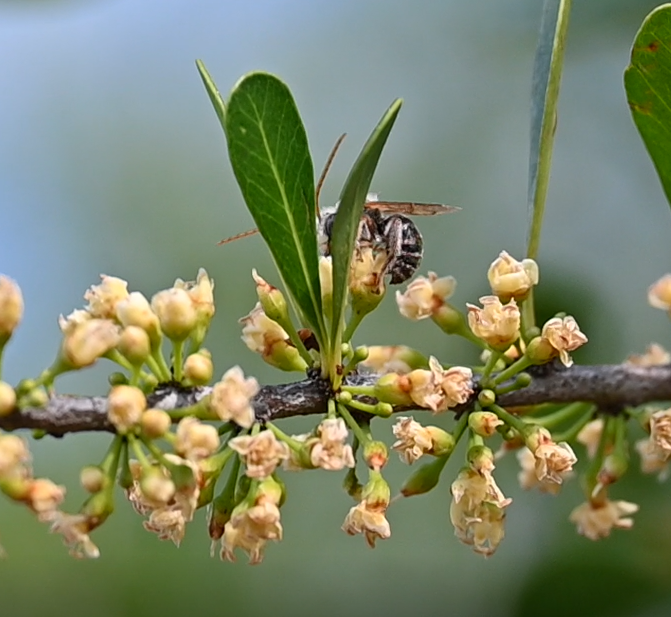
Related articles accessed online:
- “Alfisols.” U.S.D.A. Natural Resources Conservation Service. U.S. Department of Agriculture. Retrieved on September 19, 2023.
- “From the CEO: Exploring the South Texas Sand Sheet.” Neal Wilkins. East Foundation. May 2021. Retrieved on September 19, 2023.
- Native Plant Project. Online Version of the Tree Handbook. “Coma Del Sur.” Retrieved on April 4, 2024.
- Native Plant Society of Texas. “Pollinator Landscaping: Member Recommended Resources.” Retrieved on April 4, 2024.
- “Native Pollinators and Private Lands: Native Bee Needs.” Retrieved September 13, 2023.
- “Plant Lists & Collections.” Lady Bird Johnson Wildflower Center. University of Texas at Austin. Retrieved September 16, 2023.
- “Plants of the South Texas Sand Sheet—Photos & Essay” by William R. Carr. [Web Presentation by Bob Harms]. The University of Texas at Austin. William R. Carr, Botanist, The Nature Conservancy of Texas and Research Affiliate, Plant Resources Center. Retrieved on September 19, 2023.
- “Pollinator Conservation.” Lady Bird Johnson Wildflower Center. University of Texas at Austin. Retrieved September 16, 2023.
- Runyon, Robert. “Vernacular Names of Plants Indigenous to the Lower Rio Grande Valley of Texas.” The Brownsville News Publishing Co. Brownsville, Texas. 1948. Retrieved on September 16, 2023, in PDF format.
- “Tamaulipan Mixed Deciduous Thornscrub.” Texas Parks & Wildlife. Retrieved on September 19, 2023.
- “Thorns and All: Conservation Partners Show Love to Thornscrub Habitat in South Texas.” U. S. Fish & Wildlife Service. Aubry Buzek. January 11, 2023. Retrieved on September 19, 2023.
- Wildlife Austin Program. “Native Solitary Bees: Kid-friendly bees for schoolyards.” Retrieved September 15, 2023.
- Xerces Society for Invertebrate Conservation. “Endangered Species Conservation.” Retrieved September 15, 2023.
- Xerces Society for Invertebrate Conservation. (n.d.). Nesting & Overwintering Habitat | Xerces Society. Nesting and Overwintering Habitat for Pollinators and Other Beneficial Insects. Retrieved September 15, 2023.
- Xerces Society for Invertebrate Conservation. (n.d.). “Who are the pollinators?” Xerces Society. Retrieved September 15, 2023.
- Mesoxaea texana update from the South Texas Sand Sheet, and guess what? The Protoxaea gloriosa are back!!!!!!!
- “Male Mesoxaea texana on the South Texas Sand Sheet”
- “Female Mesoxaea texana on the South Texas Sand Sheet”
- “Making more Mesoxaea texana on the South Texas Sand Sheet”
- “Mesoxaea texana nectaring on Waltheria indica on the South Texas Sand Sheet!”

